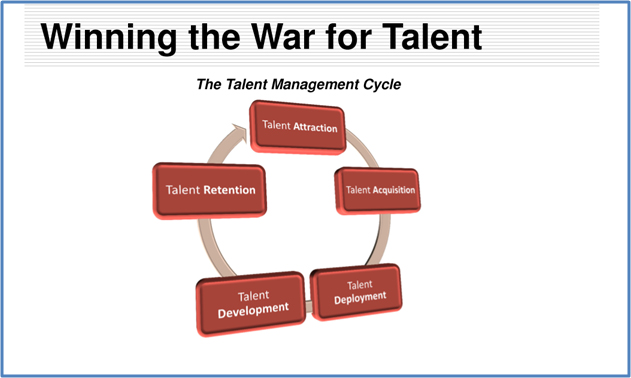
25 Sep Winning the War for Talent with Assessment
We went to town asking a number of business leaders: “What really differentiates competing organisations?” ” With the current rate of technological advancement and innovations, growing access to information and an increasingly shrinking global space, what then would really constitute a competitive advantage for organisations in today’s world of business?”
Interestingly they all responded alike: People! Human Capital! Human Assets! Human Resources!
But we beg to differ!
…
But really, could they all be wrong? Is there an addition to the traditional factors of production?
And we answer: Yes, there is an improvement to the traditional factors of production – The RIGHT People!
Selecting and developing the right people is similar to being on a war front; from identifying and hiring the right people into your organisation, to keeping high performing employees satisfied, engaged and motivated to avoid turnover, and also to identifying developmental needs and putting processes in places to address them. This can be a lot for the HR professional to joggle at the same time. This is why selecting and developing the right people is synonymous with Winning the War for Talent. Hiring, retaining and developing the right people create the most value in achieving a competitive advantage today.
The Assessment & Development Centre Concept
The notion of an assessment/development centre (AC & DC) often throws up pictures of a building or assortment of rooms devoted to development and assessment activities. But then, this is not exactly the case. Rather, these concepts are beyond the physical arrangements, they refer to ‘methodologies and techniques’ put together to simulate real life work situations with the objective of measuring participants’ competencies in relation to performance on the job being simulated.
Development centres sprouted from the Assessment Centre model, however, majorly for developmental purposes; it is increasingly used by high performing organisations as a way to develop talent. The goal of Development Centres is to assess a candidate’s capability for their next career role and focuses on personal and professional development.
Assessment/Development Centres & Organisational Strategies
In addition to serving as a means for selection and development of talents, they can also be used to convey an organisation’s commitment to its people as they are also utilised for making capacity development decisions which would in turn impact on the organisations’ bottom line.
Hiring, retaining and developing the right people makes an organisation’s human capital become a strategic resource for achieving competitive advantages. In essence, the right people become the basis for the business strategy.
Do Assessment Centres Really Work? Our Success Story
The success of assessment centres is based on the claim that they provide a more accurate method of predicting a candidate’s fit for the job or otherwise based on pre-identified and defined competencies.
To ascertain the veracity of the claim, we have used data from a pool of candidates who have been tested and assessed at various graduate recruitment programs by best-in-class organisations across sectors like banking, consumer goods and oil & gas.
From a sample size of 70,682 candidates who sat for graduate aptitude tests, about 11,933 had scores that would have been considered successful for the different tests they sat for; a 17% success rate.
These successful candidates were subsequently taken through assessment centres. The exercises were designed to assess them against the various competencies for the respective jobs they were being considered for.
Results from the assessment centres showed that only about 39% of these candidates who passed the aptitude tests were successful when directly assessed against the competencies required on the job in an assessment centre.
These findings become even more interesting when one considers the fact that quite a number of organisations make hiring decisions based solely on performance at aptitude tests and/or standard interviews. Without any link to competencies required for the job, these methods (aptitude tests, standard interviews) alone prove quite inadequate in identifying the right candidates for the role.
At Workforce Selection we are certain that a well designed and deployed centre is currently the most proven way of selecting the right talent in today’s world of business. This belief informed our investment in developing a world class assessment centre which has proven to be the best methods of selection for our clients when rated on the grounds of accuracy, acceptability and prediction of performance on the job.



No Comments